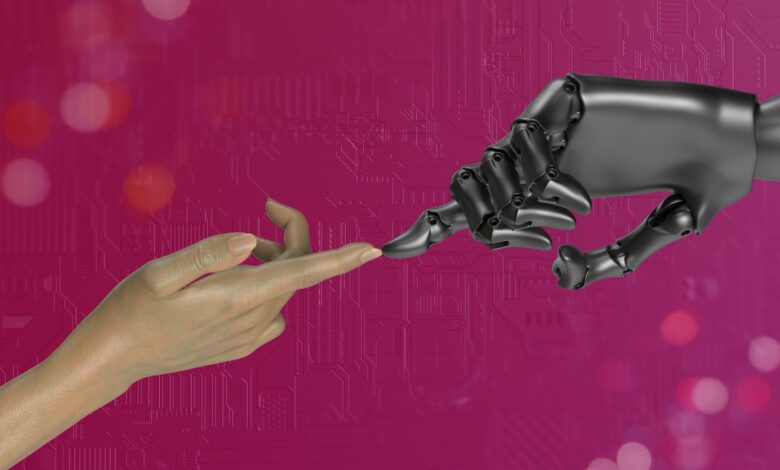
Building model kits for adults offers a unique perspective on creativity that parallels how AI approaches design. Both rely on a set of rules or algorithms but leave room for exploration and personalization.
In model kit building, a detailed framework guides construction, yet creative decisions such as customization and interpretation shape the outcome. Similarly, AI uses algorithms to generate design possibilities, allowing humans to refine and select the most meaningful solutions. This interplay highlights how AI design tools act as collaborators that extend human imagination.
By understanding the disciplined yet flexible nature of model kits, one gains insight into the evolving relationship between creativity and AI.
The Algorithm of Creativity: Lessons from Model Kits for AI Design
Understanding AI design benefits from hands-on activities like building model kits, which reveal the mechanics of constructing complex systems piece by piece. These practices emphasize structured thinking, careful planning, and the interplay between creativity and predefined rules.
Building Model Kits as a Framework for Algorithmic Thinking
Model kits break down complex creations into manageable parts, much like algorithms do for software or AI systems. Each component fits into a larger structure following explicit instructions, teaching the importance of sequence and modular design.
This process highlights algorithmic thinking, where each step depends on the last, forming a logical chain. For example, assembling a wooden music box requires precise assembly order and alignment, mirroring how AI algorithms require accurate data flow and order to function properly.
When designing AI, treating creativity as a set of steps to follow can improve clarity in how imagination translates into practical outputs.
Translating Creative Processes into AI Systems
Creativity often appears spontaneous, but model kits show that creativity can be systematically guided through rules and frameworks—principles that AI models simulate.
AI design applies this by encoding creative rules into algorithms that generate content or solve problems. Reinforcement learning or variational autoencoders, for example, can mimic human experimentation processes by exploring design variations and optimizing outcomes.
The challenge lies in capturing the essence of human creativity while maintaining structure. AI models replicate patterns, but integrating imagination demands nuanced algorithm design that blends randomness, discovery, and intentionality.
Balancing Automation and Human Imagination in Design
AI systems can automate repetitive or data-driven tasks, freeing human designers to focus on imaginative aspects. Model kits illustrate the balance between mechanical assembly and creative customization.
Automation handles precise construction, but human creators decide on style, variations, and innovation. Similarly, designers working with AI must guide the algorithm’s parameters and intervene to shape outcomes, ensuring innovation doesn’t get lost to strict automation.
Experimentation, Mistakes, and the Role of Iteration in Innovation
Building model kits requires experimentation and tolerance for mistakes during assembly, promoting iterative learning. Errors reveal functional insights and prompt design refinements.
In AI design, iterative development allows continuous improvement through testing and adjustment. Algorithms improve when exposed to varied data or scenarios, learning from failures akin to trial and error in physical model construction.
Experimentation fosters innovation by encouraging risk-taking and new approaches within a controlled framework, crucial for both human and AI creative processes.
| Key Concept | Model Kits Example | AI Design Equivalent |
| Algorithmic structure | Step-by-step assembly | Sequential data processing |
| Creativity within limits | Customizing assembled parts | Rule-based creative algorithms |
| Human-AI balance | Manual adjustments | Human-guided parameter tuning |
| Iterative improvement | Rebuilding after mistakes | Model training and refinement |
Generative AI, Design Tools, and the Evolution of Creative Capabilities
Generative AI has reshaped the landscape of design by automating content creation while expanding creative possibilities. This shift challenges the balance between efficiency and innovation, requiring refined interaction designs that foster collaboration and inclusivity between humans and machines.
Generative AI and Automation in Content Generation
Generative AI models automate the production of text, images, and other design assets by learning patterns from extensive datasets. This automation accelerates workflows, allowing designers to generate multiple concepts quickly. It reduces repetitive tasks, freeing time for higher-level creative decisions.
However, automation does not replace human creativity; instead, it supplements it by providing novel raw material or unexpected variations. Designers can use AI-generated outputs as a foundation, iterating and refining with human insight. This synergy enhances creative capacity rather than diminishing it.
Efficiency vs. Creativity in Design Tool Development
Design tools powered by generative AI prioritize efficiency but also raise questions about sustaining authentic creativity. While AI can produce unconventional and novel ideas, excessive reliance on algorithmic outputs may risk homogenizing creative styles if not guided carefully.
Developers of AI design tools face the challenge of balancing automated assistance with user control. Tools must empower designers to steer AI, allowing customization and adaptability. This balance ensures that efficiency gained through automation complements rather than overshadows inventive exploration.
Interaction Design: Human-AI Collaboration for Inclusion
Effective interaction design is critical to integrating generative AI into creative workflows. Interfaces should be intuitive and flexible, supporting diverse user needs and skill levels. Inclusive design ensures that AI tools remain accessible to a broad range of practitioners.
Collaboration models between humans and AI must emphasize transparency, explainability, and feedback. This encourages trust and empowers users to understand and influence AI outputs.





